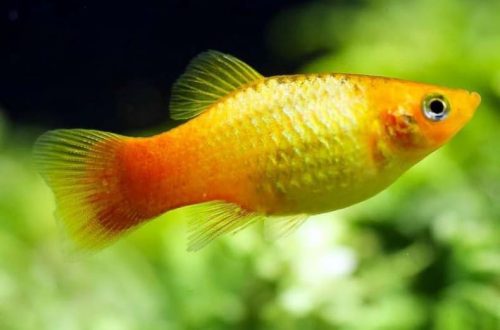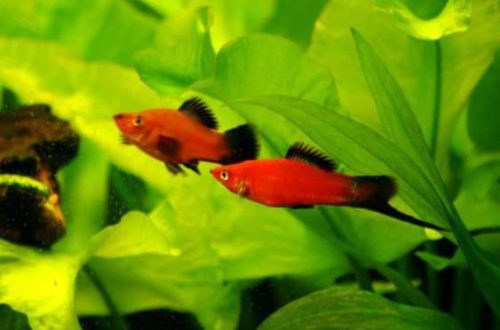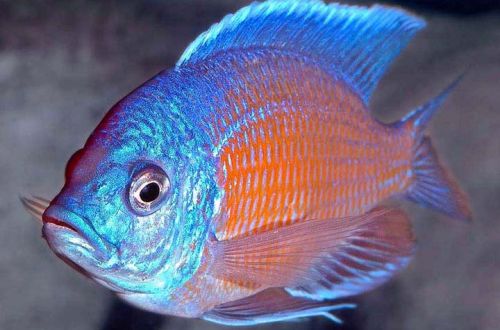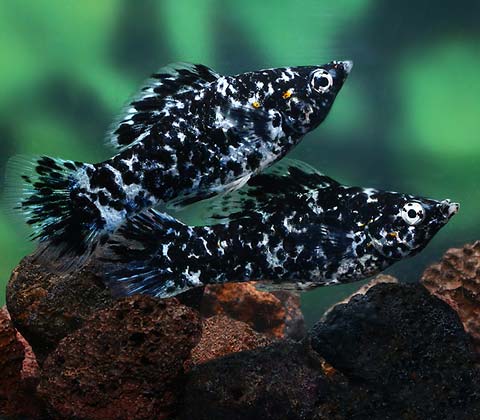
Black and white mollies
Black and white mollies is a colloquial collective name for some breeding color forms that have a characteristic body color with a predominance of white and black shades. These include, for example, Dalmatian Mollies and Marble Mollies.

Maintenance and care
Regardless of the species from which this or that breed with a similar color is formed, the maintenance requirements are identical. The differences are only in the minimum sizes of aquariums. So, for varieties bred from Molliesia sphenops, a tank of 80-100 liters is enough. For the descendants of Molliesia velifera, at least 150 liters will be required for a group of 3-4 fish, since they can reach 18 cm in length.
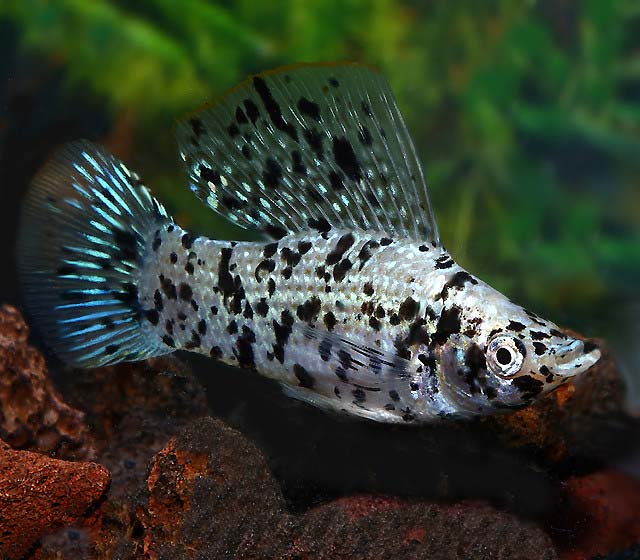
Brief information:
- The volume of the aquarium is from 100–150 liters.
- Temperature – 21-26°C
- Value pH — 7.0–8.5
- Water hardness – medium to high hardness (15-35 GH)
- Substrate type – any
- Lighting – any
- Brackish water – acceptable in a concentration of 10-15 gr. salt per liter of water
- Water movement is weak
- The size of the fish is 12–18 cm.
- Nutrition – any feed with herbal supplements
- Temperament – peaceful
- Content alone, in pairs or in a group
Otherwise, an aquarium with warm slightly alkaline water with high values of total hardness is considered a favorable habitat. The presence of areas with dense thickets of aquatic plants is welcome. The latter act not only as shelters, but can also serve as an additional source of food.
Food
The diet of Mollies should contain herbal ingredients. If the food provided does not meet the needs of the fish, they are more likely to damage aquarium plants. The best choice is food made specifically for this species, produced by many manufacturers. They are supplied in popular forms – in the form of flakes, granules.
Behavior and Compatibility
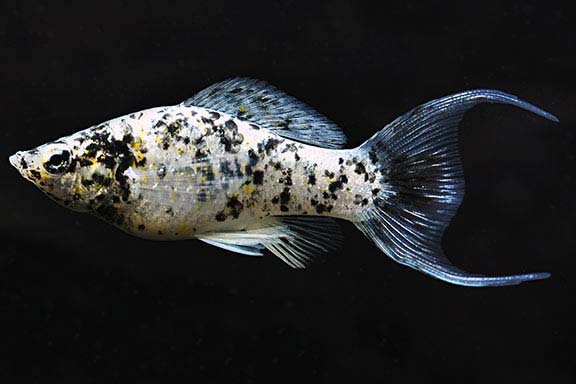
Non-aggressive peaceful species that can live in similar conditions, for example, other viviparous fish such as guppies, swordtails, platies, should be selected as neighbors in the aquarium. Intraspecific relationships are built on the competition of males for the attention of females. In small tanks, it is recommended to maintain a group composition with a predominance of females.
Breeding / breeding
In a suitable environment and a balanced diet, the fish give birth regularly. Each new generation can appear once every one or two months. Mollies give birth to fully formed fry without the formation of masonry with eggs. Parental instincts are not developed, so juveniles often fall prey to adult fish. If you plan to keep the entire brood, then the fry will need to be transplanted into a separate tank.



